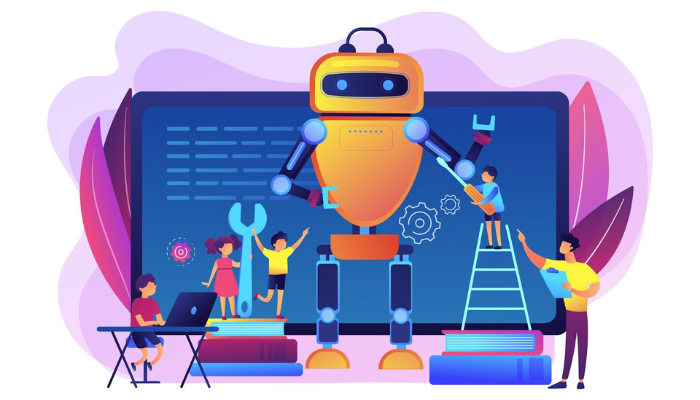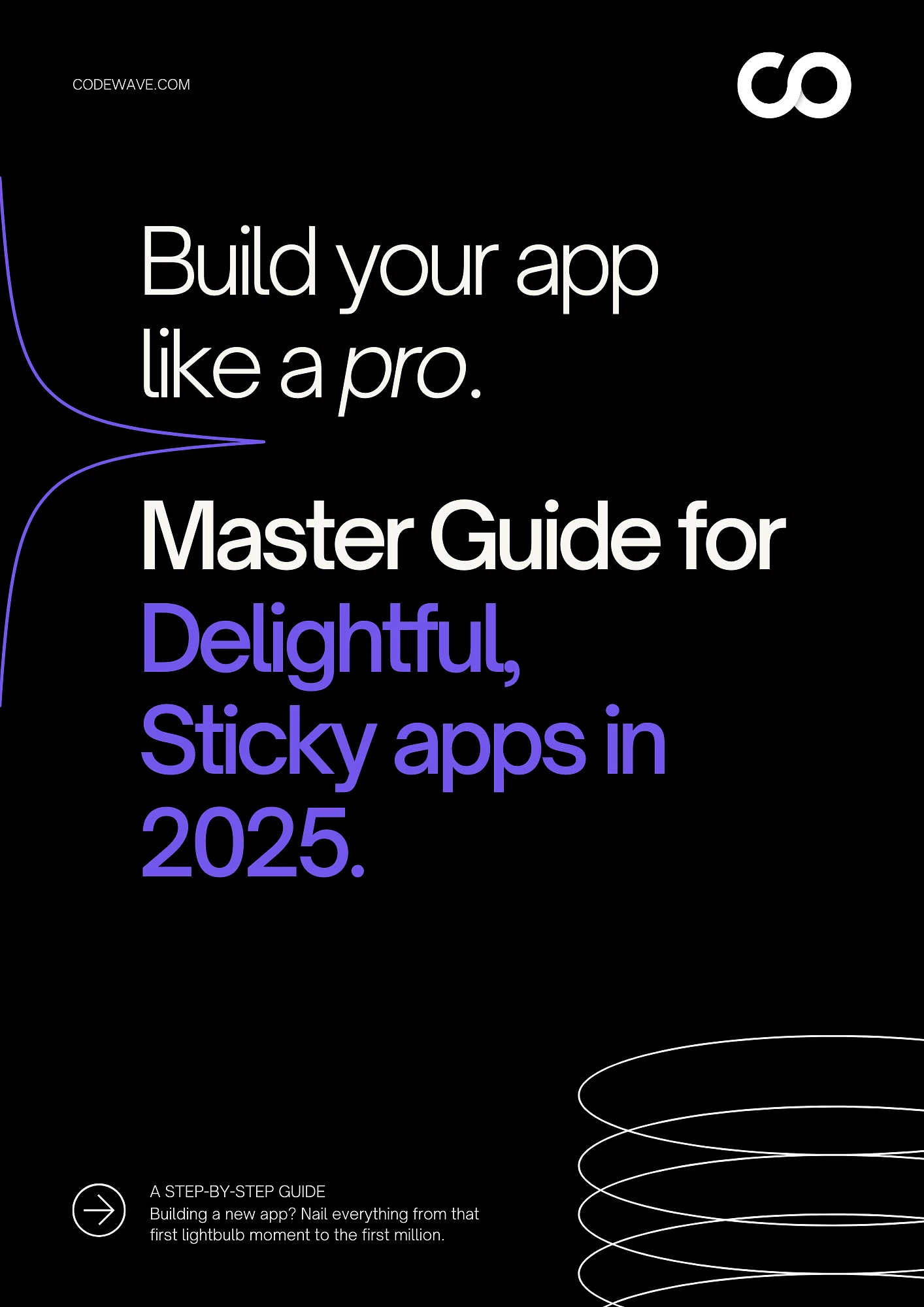Are we heading toward a future where AI replaces human educators? Not quite. Instead, AI is redefining how students learn, teachers teach, and institutions operate. Tools like ChatGPT are not a substitute for faculty, but intelligent systems that support personalized, scalable education.
In the U.S., nearly 60% of school principals are already using AI for school administration, signaling a systemic shift toward intelligent learning environments.
For business leaders in EdTech or those managing digital transformation, the question is no longer whether to explore AI, but how to implement it effectively, with precision, compliance, and measurable outcomes. This guide explores how AI and ChatGPT are reshaping U.S. education, upcoming innovations, and strategies to future-proof your software solutions.
Key Takeaways
- AI disruption in education is about enhancing, not replacing, teachers with tools that improve efficiency, access, and outcomes.
- ChatGPT is already used in US classrooms for tutoring, content generation, grading support, and administrative tasks
- The most effective applications include personalized learning paths, 24/7 AI tutors, curriculum adaptation, and multilingual content support
- Within the next five years, expect AI co-teachers, predictive analytics for student retention, and immersive XR-based learning environments
- Core risks include biased outputs, overreliance on AI, student data privacy issues under FERPA and COPPA, and factual inaccuracies from generative tools
- Long-term success depends on strategic, secure implementation and alignment with instructional goals, not on the technology alone
What AI Disruption in Education Really Means
In the United States, AI disruption in education is not about tweaking existing tools. It reflects a broader shift in how learning is designed, delivered, and optimized for diverse student needs. AI is no longer just a behind-the-scenes engine. It now actively shapes classroom instruction, assessment, and support in real time.
This disruption means moving away from static, one-size-fits-all models to adaptive systems that respond to how each student learns. It means learners can access 24/7 AI tutors, while educators offload repetitive tasks like grading and scheduling to intelligent systems that improve with usage. According to McKinsey, 65 percent of U.S. teachers already use digital tools weekly to tailor instruction, and AI is becoming the next layer on top of those systems.
Key AI Technologies Used in U.S. Education Today
- Natural Language Processing (NLP): Tools like ChatGPT use NLP to power intelligent conversations. In classrooms, this translates to AI tutors that can clarify complex topics, generate practice questions, or provide feedback on writing assignments instantly.
- Computer Vision (CV): CV is being used in proctoring tools, behavior tracking, and engagement monitoring. U.S. EdTech platforms use CV to flag distractions during online exams or detect when a student disengages during virtual lessons.
- Recommendation Systems: These systems analyze learning behavior and performance data to suggest next steps. U.S.-based platforms like DreamBox and Khan Academy already use AI to recommend lessons and resources personalized to each student’s pace and mastery level.
Automation and Augmentation in the Classroom
AI disruption also introduces two distinct outcomes: automation and augmentation.
- Automation handles repetitive or operational tasks. Think automated grading, class rostering, and scheduling. Tools like Gradescope and AI-based quiz tools are reducing administrative workload in K–12 and higher education alike.
- Augmentation supports educators in making better decisions. AI can flag students at risk of falling behind, suggest differentiated instruction strategies, or identify which content formats are most effective for certain learners.
GenAI Versus Traditional AI in U.S. EdTech
Traditional AI systems in U.S. education focused on structured logic tasks: grading multiple-choice quizzes, recommending assignments, or running analytics dashboards. Generative AI adds a new layer by enabling open-ended interactions. Students can now ask ChatGPT to explain algebra in simple terms, or educators can use it to draft lesson plans or create formative assessments.
This shift is foundational. AI is no longer just assisting operations. It is participating in the learning process, adapting to student needs, and enabling faculty to spend more time on mentorship and less on manual tasks.
How AI and ChatGPT Are Changing Classrooms Today
You do not need to wait five years to see AI’s influence in education. It is already reshaping how students engage with content and how educators deliver instruction. From lesson planning to assessment, tools like ChatGPT are introducing levels of personalization and efficiency that were previously out of reach for most US classrooms.
Curriculum personalization is becoming algorithmic
You no longer have to manually tailor learning plans for every student. AI systems trained on LMS data, quiz performance, and engagement metrics can now recommend content paths dynamically.
- In the US, platforms like Khan Academy, DreamBox, and Sown to Grow are integrating learning analytics with AI to personalize pacing and feedback. ChatGPT APIs are being used to generate alternate explanations, build scaffolds, and deliver differentiated content based on individual student progress.
- When integrated with your learning management system, AI can adapt materials continuously, responding to how students are learning; not just what they are learning next.
AI tutors are available 24/7 and never need prep time
Traditional tutoring is constrained by time and staffing. With ChatGPT embedded in chatbots, mobile apps, or LMS plugins, you can now provide students with continuous, on-demand academic support. These AI tutors can:
- Answer clarification questions after school hours
- Offer multiple explanations for the same concept (such as plain text, examples, or diagrams)
- Generate analogies tailored to student interests (for instance, using sports to teach physics)
- Summarize content into flashcards or review notes on demand
Tools like Khanmigo, built by Khan Academy in collaboration with OpenAI, are piloting this model in US schools. If you are building your own education product, Codewave helps integrate GPT models into your platform with role-specific prompting, content filters, and teacher oversight.
Automated grading is saving time and reducing burnout
Grading essays, coding tasks, or open-ended responses can take hours. GPT-based tools can now evaluate short answers and assignments against rubrics, identify missing reasoning steps, and even provide plain-language feedback for students.
For example, Gradescope, widely adopted across US universities, combines AI with instructor review to accelerate grading while maintaining quality. AI-assisted grading can be implemented by:
- Feeding rubrics and sample answers into a model
- Using prompt engineering to evaluate both correctness and reasoning
- Running submissions through secure pipelines with teacher override and audit logs
This makes grading faster, fairer, and less mentally taxing, especially in large lecture courses or high-enrollment online programs.
Content generation is shortening planning cycles
Lesson planning used to take hours. Now, teachers can prompt ChatGPT to draft quizzes, generate reading comprehension passages, or reformat lesson content for different learning levels.
With proper structure, prompts like these deliver high-quality materials:
- “Write five multiple-choice questions on the Bill of Rights, each with one tricky distractor”
- “Summarize this 1,200-word article into a handout for middle school students”
- “Create an ESL reading passage followed by three inference questions”
This accelerates planning while increasing variation and engagement in classroom resources. Educators can blend their judgment with AI speed to improve instructional quality without increasing workload.
Language support is improving equity in diverse classrooms
In multilingual districts across the United States, AI tools are helping English language learners participate more fully in the classroom. ChatGPT can simplify academic language, translate materials, and support bilingual communication.
Paired with tools like Microsoft Immersive Reader, generative AI can:
- Rephrase assignments in simplified English
- Translate key vocabulary or instructions in up to 25 languages
- Offer dual-language explanations for complex topics
If your school or platform serves immigrant families, ESL learners, or Indigenous communities, this level of real-time support increases inclusivity without requiring expanded staffing or external translation services.
Want to validate your AI use case with a working prototype? Explore Codewave’s Gen AI Development Services for week-long pilot programs that demonstrate real outcomes.
Framework: How to Implement AI in Your Institution
Adopting AI in education is not just about installing plugins or experimenting with generative tools. It requires a systematic rollout that aligns with academic goals, district or state regulations, and institutional IT capabilities. This framework is designed for EdTech founders, superintendents, CIOs, and digital learning leads at schools, colleges, and universities across the United States.
Step 1: Define core instructional and operational challenges
Before evaluating tools or models, clarify the specific problems AI is expected to solve. These might include:
- High dropout or transfer rates linked to disengagement or poor academic performance
- Static curriculum design that does not scale for diverse learner needs
- Faculty burnout from grading, feedback, and administrative overhead
- Inability to provide scalable one-on-one tutoring across all student segments
Start by reviewing SIS or LMS data (such as Canvas, PowerSchool, or Schoology) to identify time sinks, equity gaps, and learning outcomes that are currently suboptimal.
Step 2: Identify high-impact, low-friction AI use cases
The best starting points are high-volume, low-risk areas that do not require human judgment to function. These include:
- AI-assisted grading for multiple-choice, fill-in-the-blank, or short-form responses
- After-hours tutoring using conversational GPT interfaces
- Adaptive content suggestions based on real-time assessment performance
- Early diagnostics for topic comprehension or skill mastery
These use cases improve efficiency and engagement without forcing full curriculum redesign or heavy infrastructure upgrades.
Step 3: Select language models based on compliance and control
Not all large language models are suitable for use in US K–12 or higher education settings. Consider:
- GPT-4 for rich content generation, tutoring simulations, and intelligent feedback
- Claude 3 by Anthropic if you need longer context windows and conservative output safety
- Google Gemini for institutions already using Google Classroom or Workspace for Education
- Falcon, Mistral, or LLaMA if local hosting or fine-grained control over training data is a requirement
If your system handles PII or serves students under 13, public API usage may violate COPPA or FERPA. Consider private deployments with restricted logging and on-prem fine-tuning.
Step 4: Launch a pilot with feedback instrumentation
Start small. Choose a department, subject, or grade level to trial your AI use case. Ensure the pilot includes:
- Clear success metrics such as reduction in grading time, learner engagement levels, or improved feedback turnaround
- Stakeholder feedback from faculty, students, and IT support teams
- Comparison testing between AI-generated and instructor-generated outputs
- Audit logs of AI interactions, highlighting hallucinations, security concerns, or workflow disruptions
This is not a feature test. It is a functional rehearsal of how AI will behave within your institution’s live teaching and governance environment.
Step 5: Roll out with built-in governance and safety
A successful AI rollout must be auditable, secure, and responsive to student and parent expectations. Ensure:
- Access control on who can call the model and view outputs
- Interaction logging for transparency and legal audit trails
- Consent flags tied to parent permissions or FERPA compliance policies
- Role-aware prompting so that AI responds appropriately to instructors vs. students
Your AI system should operate within your institution’s broader data governance and cybersecurity standards, not outside them.
Recommended tools to support deployment
Below are some popular and education-compatible AI tools and platforms for US schools and EdTech teams:
- Canvas and Moodle plugins supporting adaptive assessments and AI feedback
- OpenAI GPT APIs with temperature control and secure token routing
- Google Dialogflow for multilingual bots and student-facing AI assistants
- Custom LLM apps integrated into iOS/Android or web dashboards via LMS APIs
- Open-source orchestration frameworks such as LangChain, Haystack, or Rasa for full-stack customization
These tools allow you to build incrementally while maintaining control over data privacy, output quality, and educational impact.
Explore how other education and tech companies are building AI-native solutions. View the Codewave portfolio
The Future: Where This Is Heading
AI is shifting your role from content delivery to designing intelligent learning ecosystems. The goal is no longer just digital access but personalized, data-informed experiences at scale. These five trends are already transforming US classrooms and EdTech platforms.
AI as a Co-Teacher
AI will complement, not replace, instructors by:
- Prompting students with tailored follow-up questions based on responses
- Summarizing lectures or chats into personalized study notes
- Detecting early disengagement and delivering timely nudges
- Integrating seamlessly with tools like Canvas and Google Classroom
- Supporting group activities as project mentors or assistant facilitators
Outcome: Higher student engagement and improved instructional quality without increasing teacher workload
Dynamic Curriculum Powered by AI
AI continuously analyzes performance and engagement to:
- Flag lessons linked to poor outcomes
- Recommend mid-semester content changes
- Tailor delivery format to individual learning preferences
- Move curriculum updates from annual to real-time
Outcome: Faster iteration, improved learning effectiveness, and better course completion rates
Predictive Analytics to Prevent Dropouts
By analyzing LMS activity, grades, and engagement data, AI can:
- Score dropout risk for each student
- Surface high-risk profiles with suggested interventions
- Integrate with platforms like Salesforce Education Cloud or Civitas
Outcome: Higher retention and more targeted academic support
Immersive and Gamified Learning with XR
AI-powered simulations can:
- Adjust in real time based on student performance and decisions
- Enable hands-on learning for STEM, ethics, or healthcare
- Translate virtual behavior into formative assessment data
Outcome: Greater engagement and improved applied learning outcomes
Autonomous Student Support Agents
AI agents guide students through key academic workflows by:
- Answering FAQs on schedules, policies, and financial aid
- Nudging students toward milestones such as course registration or internships
- Recommending electives and resources based on individual goals
Outcome: More consistent student experience and higher support efficiency
Risks and Ethical Considerations
AI in education unlocks significant value, but it also brings critical risks that affect learning integrity, equity, and compliance. Addressing these upfront is essential for safe and effective deployment.
Bias in learning models
LLMs like ChatGPT are trained on broad datasets that may not reflect the diversity of US classrooms. Without oversight, they can unintentionally reinforce stereotypes or recommend biased content.
What to do:
- Run fairness audits
- Fine-tune models using localized, demographically diverse data
- Involve educators in prompt testing and validation
Overreliance and reduced critical thinking
Always-on AI tutors can lead students to shortcut problem-solving and deep learning.
What to do:
- Add friction to AI workflows (e.g., show answer only after reasoning input)
- Encourage teacher-reviewed prompts and peer discussion as part of the feedback loop
Data privacy and regulatory compliance
Most AI tools process personal student data. Compliance with FERPA, COPPA, and state-level laws like CCPA is non-negotiable.
What to do:
- Use consent-based data policies
- Encrypt all interactions
- Log and audit AI usage for transparency
Hallucinations and content reliability
AI-generated answers may sound accurate but be factually incorrect.
What to do:
- Restrict AI to validate content libraries for high-stakes use cases
- Include human review checkpoints for grading and feedback workflows
Growing federal and state oversight
Agencies like the DOE and FTC are drafting AI guidelines. States including California and Illinois are setting stricter guardrails.
What to do:
- Align pilots with emerging state and federal standards
- Involve legal and IT teams early in procurement and deployment
Need help building FERPA-compliant AI tools with real impact? Book a strategy call with Codewave to ensure your deployment is secure and future-ready.
How Codewave Helps You Build AI-Driven EdTech
With over 250 digital transformation projects across 15 countries, Codewave helps education teams in the US turn AI potential into high-impact, production-ready systems. Whether you’re building a new learning product, scaling a tutoring platform, or modernizing your district’s digital infrastructure, the focus stays on tangible business outcomes; reduced cost per learner, faster time to launch, and improved retention.
AI-native learning platform design aligned to KPIs
Every solution begins with measurable goals. Codewave works with you to map platform features directly to metrics like:
- Learner engagement and course completion rates
- Time saved on content planning and grading
- Student satisfaction scores (CSAT, NPS)
- Operational costs per user or per course module
Interfaces are tailored for role-specific workflows (educator, admin, student), ensuring adoption and ROI at every level.
GPT-powered tutors and assistants that reduce support overhead
Custom GPT integrations reduce human dependency without sacrificing pedagogy. These assistants are trained on your syllabus and policies, and can:
- Deflect repetitive student queries from support teams
- Accelerate onboarding for new students with AI walkthroughs
- Assist instructors with real-time content scaffolding
- Generate feedback at scale while maintaining instructional tone
This can cut manual effort by up to 40 percent in high-volume scenarios like general ed courses or continuing education programs.
AI strategy and PoC delivery in under 7 days
To validate feasibility and de-risk investment, Codewave delivers fully functional GenAI prototypes within one week. These include:
- Live prompts integrated with APIs like OpenAI, Claude, or LLaMA
- Real-world use cases such as quiz generation, student Q&A, or rubric-based grading
- Telemetry to track token usage, latency, fallback rates, and prompt performance
- Walkthroughs for compliance, product, and leadership review
This approach helps you make fast, informed go or no-go decisions based on business value.
Full-stack mobile and web apps with GenAI embedded
Need to launch or modernize your learning product? Codewave builds cross-platform applications using Flutter or React Native, with GenAI features like:
- Content generation for assignments, quizzes, or assessments
- Multilingual instructions and summarization for accessibility
- In-app feedback loops and progress nudges personalized to user behavior
Apps are optimized for bandwidth, scale, and LMS compatibility; delivering a consistent experience across devices and geographies.
Privacy-first architecture with FERPA and COPPA compliance
Every AI deployment follows US education data regulations from day one. That includes:
- Fine-grained logging of model input and output
- Consent management workflows for minors and parents
- Secure API handling with token access and throttling
- Role-based permissions for prompt customization and moderation
- Integration with existing SIS, LMS, and IT policies
Whether you’re targeting school districts or higher ed, systems are built to pass internal audits and state-level compliance checks.
Ready to reduce learner support costs, accelerate go-to-market, or scale your AI features securely? Book a strategy call with Codewave and explore what’s possible in just one week.
FAQs
Q: How is ChatGPT used in schools and colleges?
Ans: In US classrooms, ChatGPT is helping educators draft lesson plans, create differentiated comprehension questions, and streamline administrative tasks like announcements and feedback. Students use it for writing support, vocabulary expansion, and STEM problem breakdowns. Many institutions integrate ChatGPT into Canvas or PowerSchool portals via API or chatbot interfaces to offer real-time academic assistance without overwhelming faculty.
Q: Can AI replace teachers in US schools or colleges?
Ans: No. AI is designed to support and not replace teachers. Tools like ChatGPT handle repetitive tasks such as grading or content generation so educators can focus on mentorship, project-based learning, and student engagement. In US K–12 and higher education systems, the role of the teacher as a mentor and curriculum architect remains irreplaceable.
Q: What are the pros and cons of using AI in US education?
Ans:
Pros:
- Personalized learning based on assessment data
- Faster feedback cycles with AI tutors
- Greater accessibility for multilingual or special education students
- Reduced grading and planning workload
Cons:
- Bias in outputs if models are not fine-tuned to local demographics
- Overreliance on AI may reduce critical thinking
- FERPA and COPPA compliance risks when using student data
- Potential misinformation if outputs are not validated
Mitigating these risks requires secure deployment, ethical model selection, and instructor-led oversight.
Q: How do I integrate AI into a US-based LMS or mobile learning app?
Ans: Start by evaluating LMS compatibility; popular US platforms like Canvas, Blackboard, and Schoology support API plugins or LTI tools. Choose a compliant AI service like OpenAI, Claude, or an open-source model hosted on US-based infrastructure. Build guardrails for different roles (student, admin, faculty), and enforce tokenized authentication. Always pilot with a limited user group before district-wide deployment.
Q: What are the best use cases for AI in US education today?
Ans:
- Auto-grading for short answers, essays, and quizzes
- AI tutoring for after-hours student support in subjects like algebra or biology
- Adaptive content recommendations inside learning platforms
- Language support for ELL students in bilingual districts
These use cases are compliant with US standards and help reduce educator burnout while improving learning outcomes.
Q: What should I consider before launching an AI pilot in a US school or university?
Ans:
- Define your objective: speed, access, personalization, or staff support
- Secure parental or student consent per FERPA and COPPA requirements
- Identify a low-risk, high-impact use case such as auto-feedback or content drafting
- Set measurable success metrics like reduced grading time or higher student satisfaction
- Involve academic leadership, legal, IT, and educators early in pilot planning to avoid compliance or adoption hurdles
Codewave is a UX first design thinking & digital transformation services company, designing & engineering innovative mobile apps, cloud, & edge solutions.







